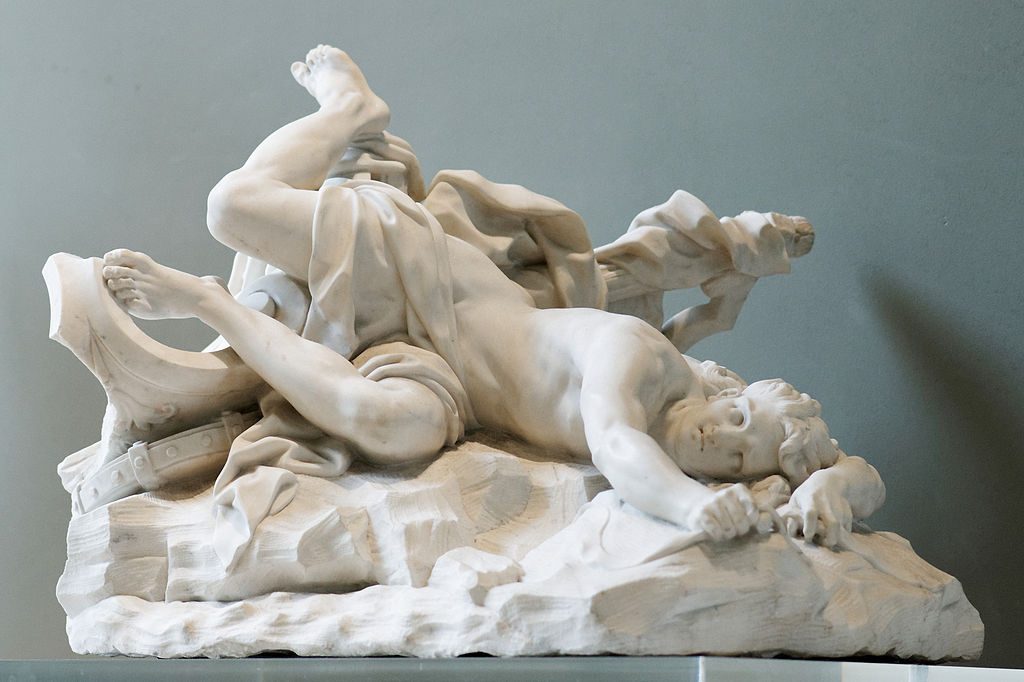The Ancient Greek Hero in 24 Hours[1] is based on a course that Professor Gregory Nagy has been teaching at Harvard University since the late 1970s.
The book discusses selected readings of texts, all translated from the original Greek into English. The texts include the Homeric Iliad and Odyssey; selected Homeric Hymns; the Hesiodic Theogony and Works and Days; selected songs of Sappho and Pindar; selections from the Histories of Herodotus; the Agamemnon, Libation Bearers, and Eumenides of Aeschylus; the Oedipus Tyrannus and Oedipus at Colonus of Sophocles; the Hippolytus and Bacchae of Euripides; and the Apology and Phaedo of Plato. Also included are selections from Pausanias and Philostratus. It is divided into 24 chapters, 24 Hours, each exploring one or several topics.
This series of galleries attempts to illustrate each Hour with visual art. We will have 6 galleries corresponding to 4 hours each. This fifth gallery covers Hours 17–20.
For Gallery 1 see here, for Gallery 2 see here, for Gallery 3 see here, and for Gallery 4 see here.
Image credits
Makron Painter: Libation scene. Interior of an Attic red-figure cup. c 480 BCE, Louvre
Photo: Marie-Lan Nguyen public domain via Wikimedia Commons
Menelaos: Orestes and Electra, Ludovisi Group, signed by Greek Sculptor Menelaos, the pupil of Stephanos, 1st Century BCE, restorations by Ippolito Buzi. Palazzo Altemps, RomePhoto: Marie-Lan Nguyen, Creative Commons Attribution 2.5 Generic license.via Wikimedia Commons
Choephorai Painter Orestes, Elektra and Hermes in front of the tomb of Agamemnon, pelike, c 380/370 BCE. Louvre
Photo: Bibi Saint-Pol public domain via Wikimedia Commons
Downman, John: The Ghost of Clytemnestra Awakening the Furies. 1781, Yale Center for British Art.
public domain: Open Access Policy, Yale Center for British Art
Bouguereau, Adolphe-William: Orestes Pursued by the Furies. 1862.
Chrysler Museum of Art. Educational use.
Olive tree on the Acropolis, symbol of Athena
Photos: Kosmos Society
Ballots used in Athens, Agora Museum
Photo: Kosmos Society
Kleoteria used in Athens, Agora Museum
Photo: Kosmos Society
Shrine of Erinyes under Areopagus, Athens
Photo: Zde, Creative Commons Attribution-Share Alike 4.0 Internationallicense via Wikimedia Commons
Fulchran, Jean Harriet. Oedipus at Colonus. 1798. The Cleveland Museum of Art
Creative Commons (CC0 1.0) The Cleveland Museum of Art
Statue of a Sphinx, Pentelic marble. One of the earliest known Archaic Sphinxes c570 BCE, National Archaeological Museum, Athens
Photo: Kosmos Society
Attributed to Oedipus Painter: Oedipus and the Sphinx of Thebes. Red-figure kylix, c 470 BCE, Vatican Museum.
Photo: Carole Raddato. Creative Commons Attribution-Share Alike 2.0 Generic license, via Wikimedia Commons
Blanc, Joseph: Le meurtre de Laïus par Oedipe, [The murder of Laios by Oedipus] 1867, Paris, Ecole Nationale Supérieure des Beaux-Arts
Photo: VladoubidoOo, Creative Commons Attribution-Share Alike 3.0 Unported license via Wikimedia Commons
Gagneraux, Bénigne: The Blind Oedipus Commending his Children to the Gods. 1784. Nationalmuseum, Sweden.
Photo: Erik Cornelius / Nationalmuseum. Public domain.
Cabanel, Alexandre : Phaedra, 1880. Fabre museum Public domain, via Wikimedia Commons
Sarcophagus tub with depiction of the myth of Phaedra and Hippolytus, Marble, Thessalonica, Roman Period, first half of 2nd century CE. Istanbul Archaeological Museum.
Photo: Kosmos Society
Lemoyne, Jean-Baptiste: Hippolytus’ death 1715., Louvre
Photo: Marie-Lan Nguyen, public domain, via Wikimedia Commons
Note: Images have been selected from pictures that are freely available with open source or Creative Commons licenses, or (attributed to “Kosmos Society”) from photographs sent in by community members for the purpose, used with permission. The images in this post are intended to suggest the subject, rather than illustrate exactly—as such, they may be from other periods, subjects, or cultures. Attributions are based where possible by those shown by museums, or on Wikimedia Commons or Flickr, at the time of publication on this website.
Images accessed June 2019.
[1] Nagy, Gregory. 2013. The Ancient Greek Hero in 24 Hours. Harvard University Press, Cambridge, MA: 2013. Available online at CHS.
https://nrs.harvard.edu/urn-3:hul.ebook:CHS_NagyG.The_Ancient_Greek_Hero_in_24_Hours.2013
____
Hélène Emeriaud, Janet Ozsolak, and Sarah Scott are members of the Kosmos Society.
















